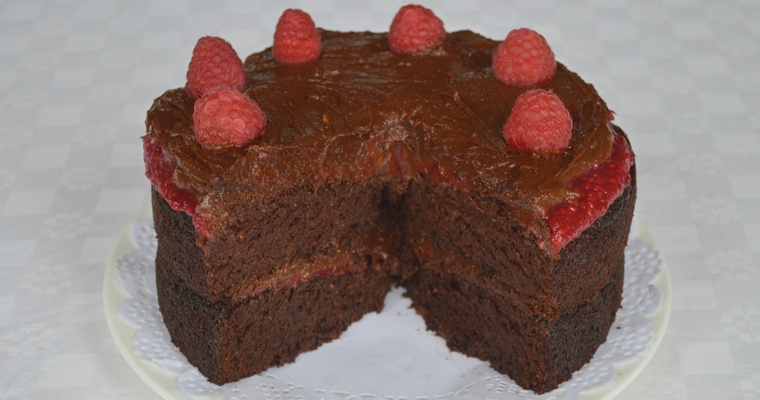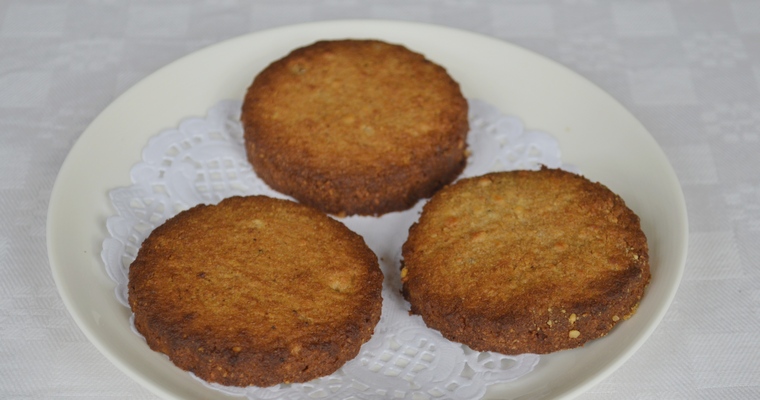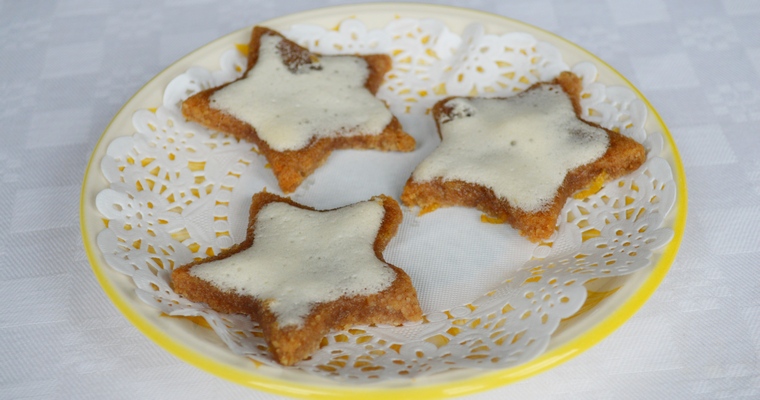Beautiful upside-down cake with caramelised pear topping. This Dairy-free, Gluten-free and Paleo recipe is made with olive oil, ground almonds and honey.
Upside-down cakes are simple to make, involving nothing more taxing than lining the bottom of a cake tin with caramel and fruit, and pouring over a cake batter. Yet they invoke a delightful élan when flipped over to reveal a beautiful halo of caramelised fruit. For this reason, upside-down cakes are generally baked in a larger tin, to maximise the topping to cake ratio. Accordingly, they rely on a denser cake mix which can withstand the weight of the fruit.
The key to success in an upside-down cake is to use a juicy fruit that is capable of liquefying the caramel during cooking. If the fruit does not release enough juices during cooking, then the caramel will simply harden into impenetrable shards. Good candidates include apples, apricots, peaches, pears and – of course – the classic pineapple rings. However, you can make an upside-down cake with dried fruits if you first poach them in a liquid such as fruit juice or alcohol to plump them up.
The second most important point relates to making the caramel itself. As you boil honey and water, the mixture gradually darkens and develops bitter tones – it is these bittersweet notes that distinguish a caramel from a syrup. If you do not cook caramel for long enough, then it is too light and too sweet – a thin imitation without any complex roasty flavours. If you cook caramel for too long, then it becomes too dark and too bitter. For best results, simply monitor the colour carefully and stop as soon as you achieve a deep amber colour.
Ingredients
for the topping:
- 1/2 cup (135g) honey
- 3/4 cup (180ml) water
- 450g-500g pears (about 2 large pears, or 4 small pears)
for the cake:
- 2 cups (180g) ground almonds
- 2 teaspoons ground ginger
- 1 1/2 teaspoons ground cinnamon
- 1 teaspoon baking soda
- 1/4 teaspoon salt
- 3 large eggs, separated
- 1/2 cup (135g) honey
- 1/2 cup (120ml) olive oil
for greasing the cake tin:
- olive oil
Instructions
- Preheat the oven to 160°C/320°F. Lightly grease the sides of a 23cm/9″ round cake pan (it is better not to use a loose-bottomed tin, as the caramel might leak out. But, if you must, then sit on top of a tray or a sheet of tin foil with the edges folded up). Line the bottom with baking paper.
- Put the honey and water in a small saucepan – preferably an enamel one with a pale-coloured bottom, if you have one, as this will make it easier to monitor changes to the colour. Heat over a medium heat and stir with a metal spoon until the honey dissolves into the water – about 1-2 minutes. Turn up the heat to medium-high and boil, swirling occasionally, until the liquid turns a deep amber colour – about 15-20 minutes. Keep an eye on it as soon as it starts to colour, as you don’t want to burn it. When done, the liquid should have thickened and feel tacky when you drag the spoon along the bottom of the pan. Pour the caramel into the prepared cake pan, and spread evenly across the bottom.
- Meanwhile, peel the pears. Chop into quarters, lengthways, and remove the core. Slice each quarter into thin wedges. Arrange the pear wedges in a fan shape on top of the caramel, overlapping the pieces slightly and with the pointed end facing the middle. Set aside.
- In a small bowl, measure out the dry ingredients (ground almonds, ginger, cinnamon, baking soda and salt).
- In a large mixing bowl, measure out the wet ingredients (egg yolks, honey and olive oil).
- Put the egg whites in a clean, dry bowl and whisk with an electric whisk for 2 minutes, until soft peaks form.
- Mix the wet ingredients until blended using the same whisk. Add the dry ingredients, and stir until blended using a wooden spoon.
- Lighten the mixture by stirring in one-third of the whisked egg whites. Tip in the rest of the egg whites and gently fold in using a spatula: cut down the centre with the side edge of the spatula; scrape across the bottom of the bowl and up the side, scooping up the mixture as you go so that it is turned over and under; rotate the bowl 90° and repeat until fully blended. Be careful not to overwork the mixture and knock out the air, but make sure the bitter egg white is fully blended.
- Pour the mixture into the prepared tin. Rest a tented sheet of tin foil on top to avoid over-browning. Transfer to the preheated oven and bake for 45 – 60 minutes, until golden on top and springy to the touch.
- Wait until the cake has cooled for 10 minutes before running a palette knife around the sides and turning out onto a wire cooling rack.








I loved this cake. It was easy to make and lovely to eat.
Thanks for sharing your feedback , that’s really nice to hear 🙂
I was gifted some perfectly ripe pears and used them in this cake. I reduced the honey by half in both places, and it was just sweet enough to my tastes. Making the honey caramel was a new thing for me, and I was convinced I had burned it when it finally thickened. I let it cool, and it had turned into a semi-hard candy by the time I lined the parchment-lined pan with it. I was dubious the whole time the cake was baking. But I was so delighted that the pear juice dissolved it all, to create a rich, deep flavor akin to a graham cracker—not at all burnt! Next time I won’t wait so long to pour in the caramel. The ginger was the perfect complement to this. Thank you so much for this wonderful recipe!
Ha I usually do the same thing of reducing by half the amount of sugar when following a new cake recipe! Thank you for sharing your experience of making the cake. It definitely *is* hard prying caramel out of the pan once it sets – for this reason, I always rush the pan straight to the sink to soak in warm soapy water once I’ve poured out the caramel. I found that I needed to make honey caramel 2-3 times before I was able to confidently identify the perfect point when it was thickened and flavoursome but not burnt.